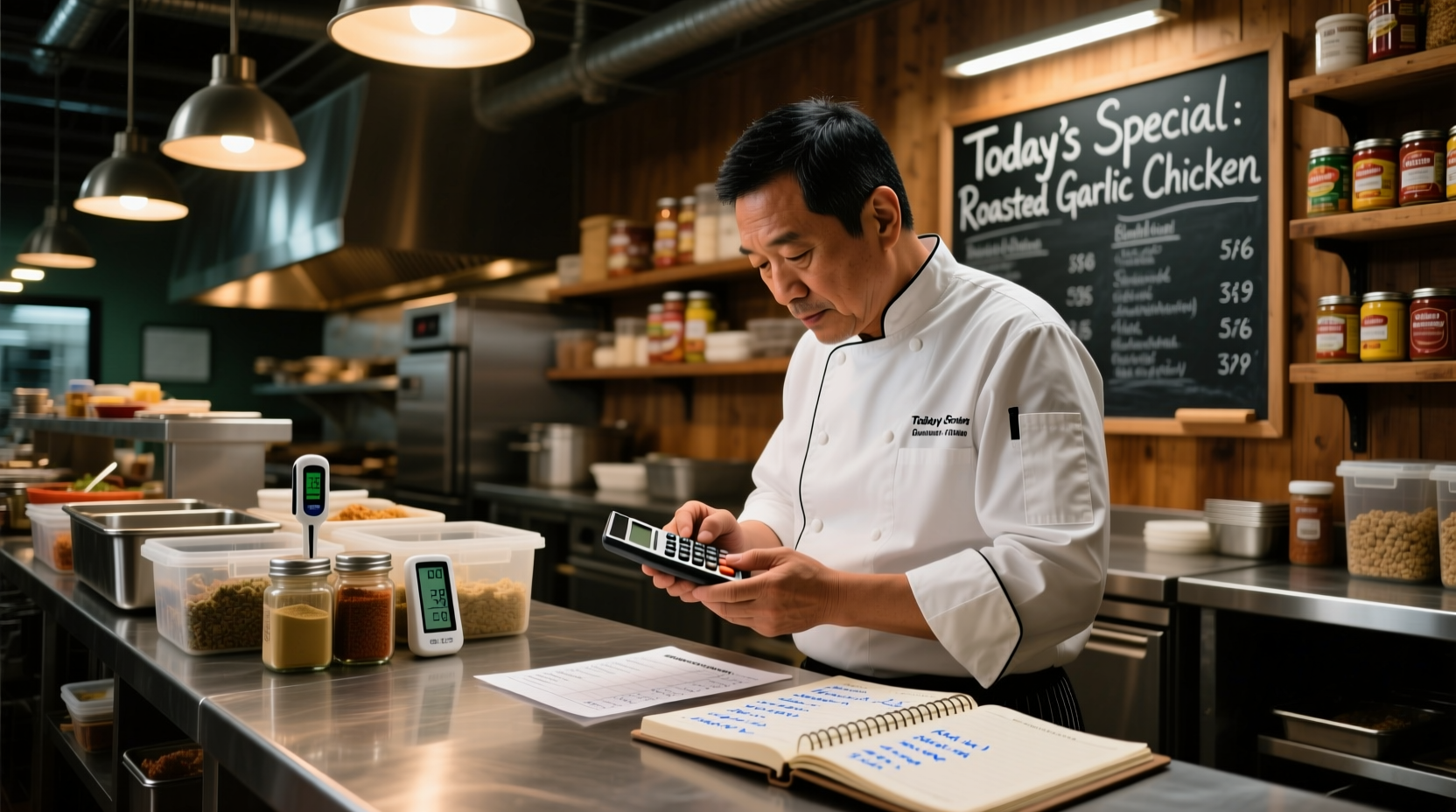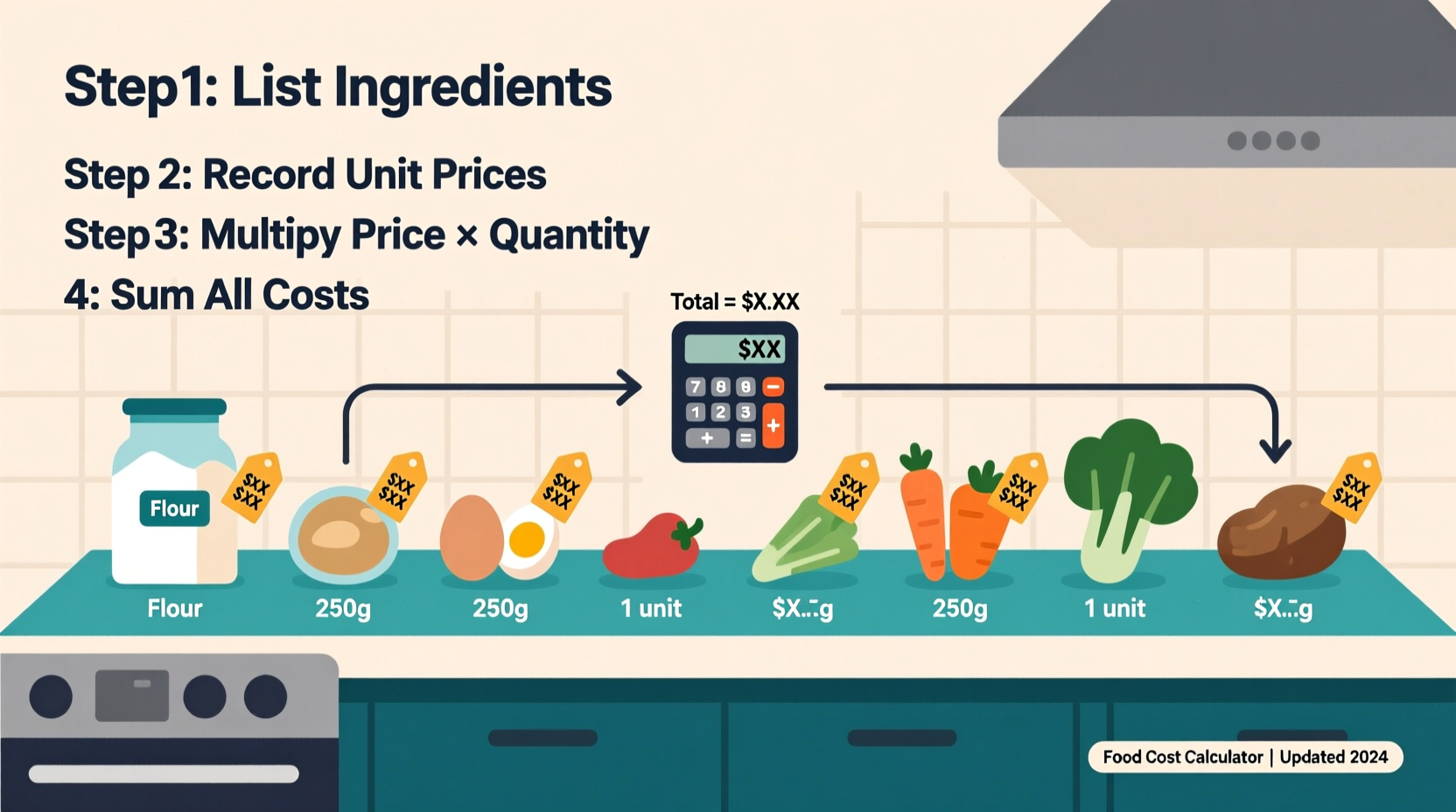Food cost percentage is calculated by dividing your total food cost by food sales, then multiplying by 100. The standard formula is: (Beginning Inventory + Purchases - Ending Inventory) ÷ Food Sales × 100. Most successful restaurants maintain food costs between 28-35% of revenue to ensure profitability while delivering quality dishes.
Understanding your food costs isn't just accounting work—it's the foundation of restaurant profitability. When you calculate food cost accurately, you gain immediate insight into where your money flows, which menu items actually contribute to your bottom line, and where waste might be silently eroding your profits. This guide delivers the exact methodology restaurant operators use to track and optimize food costs, with practical examples you can implement starting today.
Why Food Cost Percentage Matters More Than You Think
Food cost percentage represents the relationship between what you spend on ingredients and what you earn from selling menu items. Unlike fixed costs like rent, food costs directly reflect your operational efficiency. Restaurants operating with food costs above 35% often struggle to maintain profitability after accounting for labor, overhead, and other expenses.
According to the National Restaurant Association, full-service restaurants typically aim for 28-35% food cost percentages, while quick-service establishments target 25-30%. These benchmarks vary based on concept, location, and menu complexity—fine dining operations might accept 30-35% to maintain premium ingredients, while pizza restaurants often operate profitably at 20-25%.
| Restaurant Type | Target Food Cost % | Acceptable Range |
|---|---|---|
| Full-Service Casual | 30% | 28-33% |
| Fine Dining | 32% | 30-35% |
| Quick Service | 27% | 25-30% |
| Pizza Establishments | 23% | 20-25% |
This food cost percentage chart by restaurant type reflects industry standards based on National Restaurant Association data from 2024. Understanding these benchmarks helps you determine whether your calculations fall within healthy parameters for your specific concept.
The Complete Food Cost Calculation Process
Accurate food cost calculation requires systematic tracking over a specific period, typically weekly or monthly. Here's the step-by-step process professional operators use:
Step 1: Gather Your Inventory Data
Conduct a complete physical inventory at the beginning and end of your tracking period. This includes all ingredients in storage, walk-ins, and prep areas. Digital inventory systems can streamline this process, but manual counts remain essential for accuracy.
Step 2: Document All Purchases
Collect all invoices and receipts for food purchases during the period. Exclude non-food items like cleaning supplies or paper goods. Organize these by category (produce, proteins, dry goods) to identify spending patterns later.
Step 3: Apply the Food Cost Formula
Use this standard industry formula:
(Beginning Inventory Value + Total Purchases - Ending Inventory Value) ÷ Total Food Sales × 100 = Food Cost Percentage
Let's walk through a real food cost calculation example for a hypothetical restaurant:
- Beginning inventory: $8,500
- Weekly purchases: $4,200
- Ending inventory: $7,900
- Weekly food sales: $15,000
Calculation: ($8,500 + $4,200 - $7,900) = $4,800 ÷ $15,000 = 0.32 × 100 = 32% food cost
This percentage falls within the ideal range for a full-service restaurant. If your calculation yields a significantly different result, double-check your inventory counts and sales data for discrepancies.
Step 4: Calculate Individual Menu Item Costs
For precise management, determine the food cost for each menu item:
(Cost of all ingredients in dish ÷ Menu price) × 100 = Menu Item Food Cost Percentage
Example: A pasta dish with $2.75 in ingredients sold for $14.00 has a food cost percentage of ($2.75 ÷ $14.00) × 100 = 19.6%.
Common Food Cost Calculation Mistakes to Avoid
Even experienced operators make these critical errors when they calculate food cost percentage:
- Inconsistent inventory timing - Counting inventory at different times of day creates inaccurate comparisons
- Ignoring waste and spoilage - Not accounting for trim, spoilage, or staff meals inflates your actual costs
- Mixing food and non-food purchases - Including cleaning supplies in food cost calculations distorts results
- Using estimated rather than actual inventory - Guessing inventory values instead of physical counts
According to a USDA Economic Research Service study, restaurants that implement precise inventory tracking systems reduce food waste by 15-20% within the first year, directly improving their bottom line.
When Standard Food Cost Benchmarks Don't Apply
While the 28-35% range works for most establishments, certain contexts require different expectations:
- New restaurants often experience higher food costs (35-40%) during the first 3-6 months as staff learn proper portioning and prep techniques
- Seasonal operations like beachfront restaurants may have fluctuating costs based on ingredient availability
- Specialty concepts focusing on premium ingredients (truffles, caviar, wagyu) might operate profitably with food costs up to 40%
- High-volume delivery models face additional packaging costs that affect overall food cost calculations
These food cost context boundaries explain why blindly following industry averages can mislead restaurant operators. Your specific business model determines what constitutes a healthy food cost percentage.

Practical Strategies to Optimize Your Food Costs
Once you've accurately calculated your food cost percentage, implement these proven optimization techniques:
Conduct Waste Tracking
Designate specific containers for different waste types (spoilage, overproduction, trim) and document daily. This reveals patterns you can address—perhaps your tomatoes consistently spoil before use, indicating a purchasing adjustment is needed.
Implement Strict Portion Control
Use standardized scoops, scales, and measuring tools for every ingredient. Train staff thoroughly and conduct random checks. A study by Cornell University's Food and Brand Lab found that consistent portioning can reduce food costs by 4-6% immediately.
Optimize Your Menu Engineering
Analyze each menu item's contribution margin (sales price minus food cost). Focus promotion on "stars" (high profit, high popularity) and consider removing "dogs" (low profit, low popularity). This strategic approach often improves overall food costs without reducing quality.
Negotiate with Suppliers Strategically
Consolidate purchasing where possible, but don't sacrifice quality for minor savings. Consider seasonal contracts for produce or protein to lock in favorable pricing during peak availability. Always compare multiple vendors—even a 2-3% reduction across your purchasing can significantly impact your bottom line.
Advanced Food Cost Management Techniques
For operators ready to take their food cost management to the next level:
- Daily food cost tracking - Calculate food costs daily rather than weekly to catch issues immediately
- Theoretical vs. actual cost comparison - Compare what your food costs should be based on sales mix versus actual costs to identify discrepancies
- Recipe costing software - Implement systems that automatically update costs as ingredient prices change
- Staff incentive programs - Tie kitchen team bonuses to food cost targets to encourage waste reduction
Restaurants that implement these advanced food cost control methods typically see 3-7% improvement in their food cost percentages within six months, translating directly to increased profitability.
When to Seek Professional Help
If you consistently struggle with food costs above 38% despite implementing standard practices, consider consulting a restaurant operations specialist. Persistent high food costs often indicate deeper issues like:
- Systemic inventory management problems
- Staff theft or improper procedures
- Menu engineering flaws
- Inadequate training protocols
A professional assessment can identify these hidden issues and provide targeted solutions specific to your operation.
Key Takeaways for Sustainable Food Cost Management
Accurate food cost calculation isn't a one-time exercise but an ongoing management practice. By implementing regular tracking, understanding your specific benchmarks, and addressing issues proactively, you'll transform food cost management from a chore into a powerful profit optimization tool. Remember that small, consistent improvements compound over time—reducing your food cost percentage by just 2% on $500,000 in annual food sales generates an additional $10,000 in profit.











 浙公网安备
33010002000092号
浙公网安备
33010002000092号 浙B2-20120091-4
浙B2-20120091-4